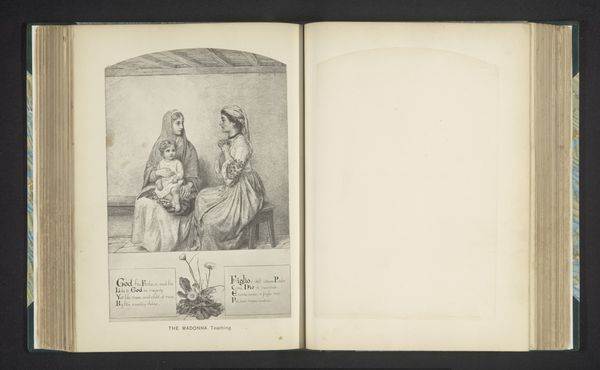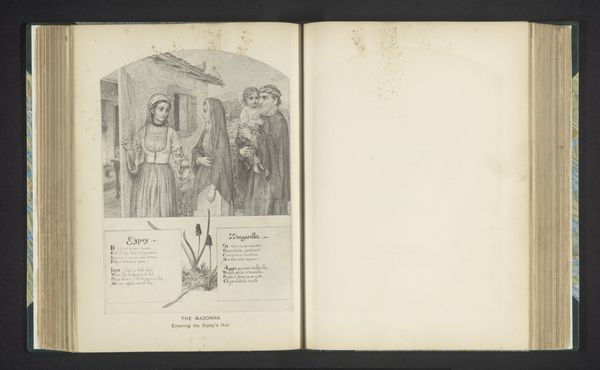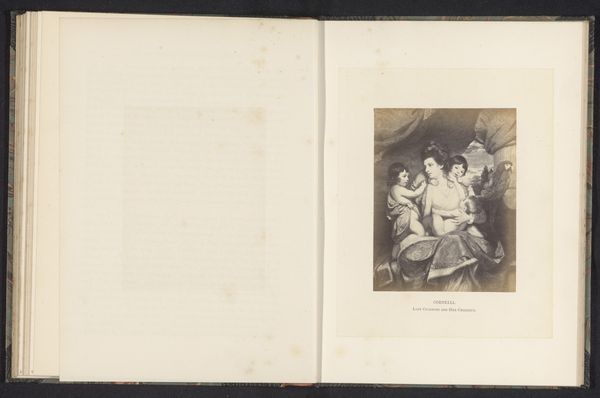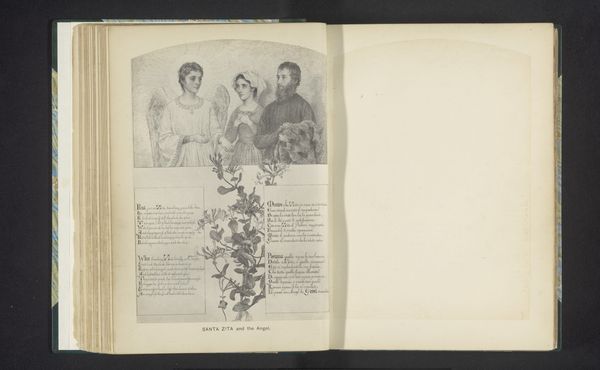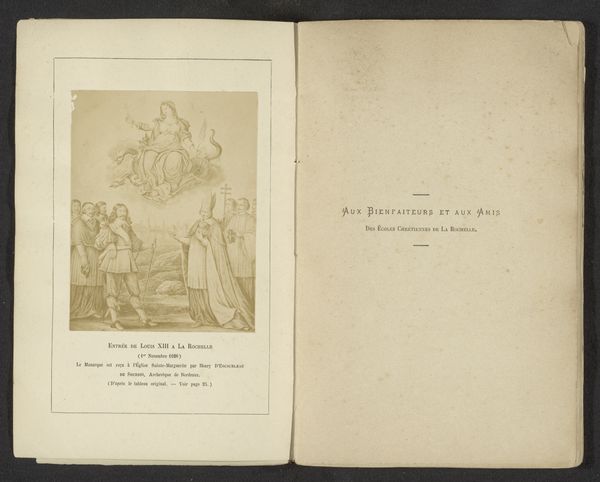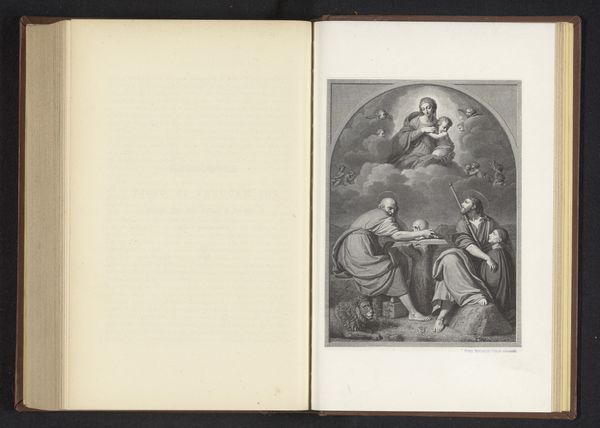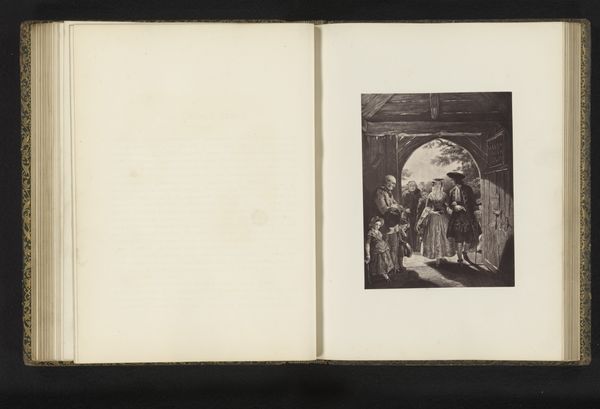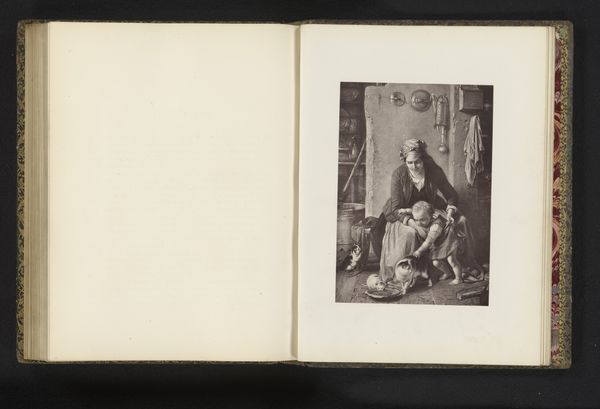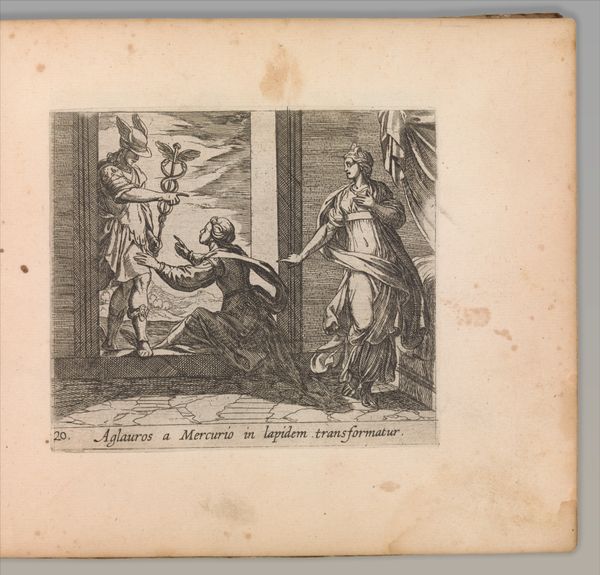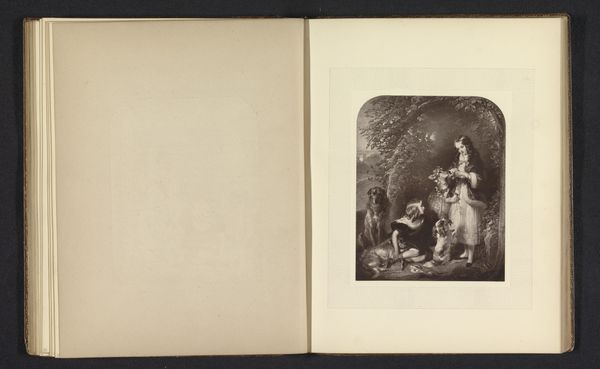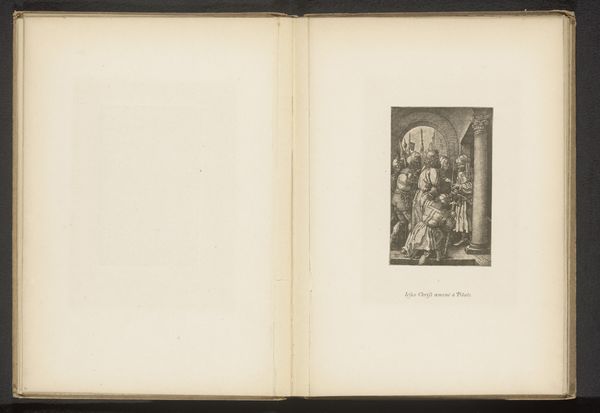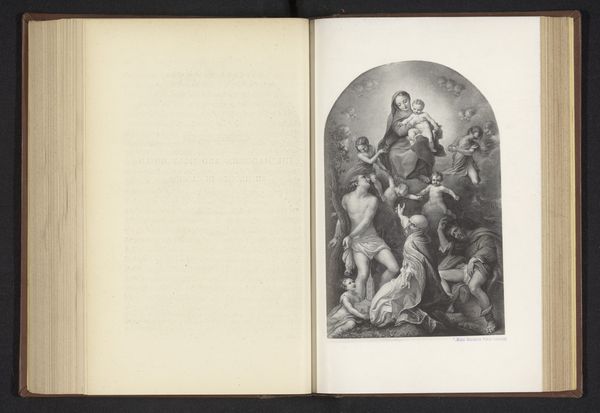
Fotoreproductie van een prent, voorstellende een Roma vrouw die de toekomst van Christus voorspelt before 1885
0:00
0:00
print, photography
#
portrait
#
narrative-art
# print
#
photography
#
history-painting
#
realism
Dimensions: height 235 mm, width 168 mm
Copyright: Rijks Museum: Open Domain
Editor: Here we have a photo reproduction of a print from before 1885 by Frederick Hollyer titled “Fotoreproductie van een prent, voorstellende een Roma vrouw die de toekomst van Christus voorspelt," which translates to "Photo reproduction of a print, depicting a Roma woman predicting the future of Christ." I’m struck by the way it blends portraiture with narrative elements, almost like a staged photograph for a history painting. What can you tell me about this print? Curator: This work speaks volumes about the production of images and their consumption in the late 19th century. Photography reproducing prints was a means of democratizing art, making images more widely accessible. Consider the labor involved – the photographer, the printer, the Roma woman potentially paid or coerced into posing – and how their collective work served to reinforce existing social hierarchies. Editor: That's fascinating. I hadn't considered the social dynamics inherent in the reproduction process. So, this print isn't just about depicting a biblical scene; it's about the labor and social context of image production itself? Curator: Precisely. The material reality of how this image was created – the paper, the ink, the photographic process, and the various hands that contributed – shaped its meaning and reach. The image of the Roma woman gains meaning depending on whose gaze it has been produced. Whose prophecy are we supposed to accept? Editor: So, by examining the materials and processes, we can unpack the layers of social and economic relationships embedded within the artwork itself? It sounds as though by simply reproducing art, it loses value when art and artists alike become disposable? Curator: Exactly. It invites us to think critically about the flow of images and their role in perpetuating, or perhaps even challenging, existing power structures within the late 19th-century. What we initially consume as 'high art' could simply be devalued 'craft'. Editor: I see the piece so differently now. It's no longer just a scene but also about the network of labor that produced it and who those images served at the time of production. Thank you for helping me decode its message.
Comments
No comments
Be the first to comment and join the conversation on the ultimate creative platform.
